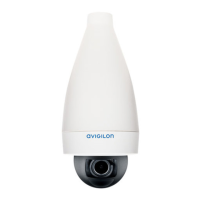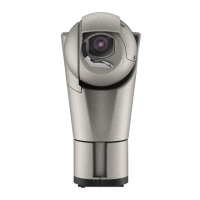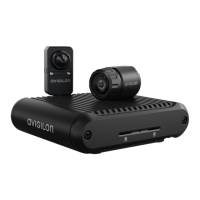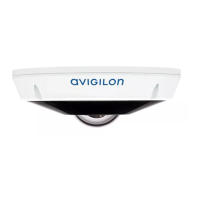Connecting Cables
Refer to the diagrams in the Overview section for the location of the different connectors.
To connect the cables required for proper operation, complete the following:
1. Feed the network cable through the gland cap and cable gland. Crimp the RJ-45 cable connector
(supplied) to the end of your network cable.
The network cable connection can also be used to supply power to the camera using Power over
Ethernet (PoE). If using PoE, connect a PoE compliant injector or switch to the Ethernet network
cable with the output rated:
l
With IR Ring: 60W PoE mid-span injector (POE60U-1BTE). Alternatively, connect to a Cisco®
UPoE capable switch, supporting 60W over 4 pairs. Note that the Cisco switch must be
configured with the
Force Four Pair
option enabled.
l
Without IR Ring: Power over Ethernet (PoE) Plus, PD-9001GR/AT/AC-MSI, IEEE 802.3at
Class 4 — Connect a PoE Plus compliant injector or switch.
Note: When on UPoE and without an IR ring, the H5A Multisensor will continue to
request 60W power on startup, as the IR ring is a hot-pluggable add-on accessory. If
the IRring accessory will never be used, the recommendation is to limit the available
power to PoE plus equivalent on the Cisco switch settings.
2. Connect the following optional connections to the supplied pigtail I/O connector. See
Connecting to
Power, Audio, and External Devices
on page65 for more information on the different connections.
a. If external input or output devices are part of the installation (for example: door contacts,
relays, etc.), wire those devices to the pigtail connector.
b. If an external microphone or speaker is required, connect the devices to the pigtail connector.
c. If external power is required, connect an external "Class 2" or "LPS" or "Limited Power Source"
to the pigtail connector with output rated:
Connecting Cables 39
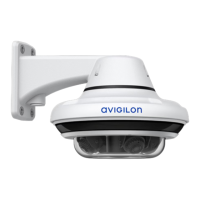
